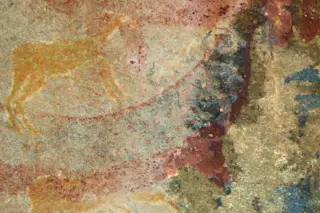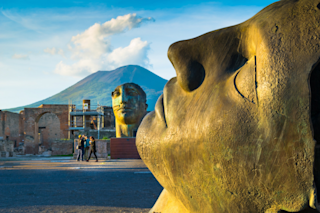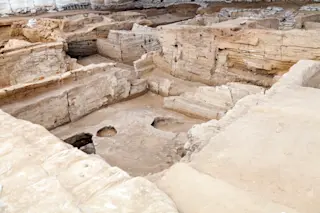To the ancient Greeks, the oracle at Delphi was the voice of Apollo. To Jelle de Boer, the oracle was more likely an ordinary woman high on hydrocarbons. De Boer, a geologist at Wesleyan University in Connecticut, believes the medium who served in the shrine delivered her prophecies while immersed in a trance induced by a naturally occurring mixture of ethane, methane, and ethylene, a sweet-smelling gas that was used as an anesthetic in the early 20th century.
De Boer had discovered that the Temple of Apollo lies atop the crossroads of two geologic faults. The slipping and expansion of these faults, he believes, allowed volatile gases to escape from oil-rich limestone deposits and rise through fissures and springs into the sunken base of the shrine. When de Boer and his colleagues recently analyzed sediments from inside the shrine's foundation, they discovered trapped molecules of ethane and methane. They also found these gases, as well as ethylene, bubbling up in the Kerna Spring, northwest of the temple.
Nearly 2,000 years ago, the author and temple priest Plutarch fingered a sweet-smelling gas as the source of the oracle's predictions. But the French archaeologists who excavated the site a century ago dismissed the theory as myth. De Boer thinks it is time to give Plutarch proper credit: "He was a very good naturalist. He gave what is basically a primitive geological report."














